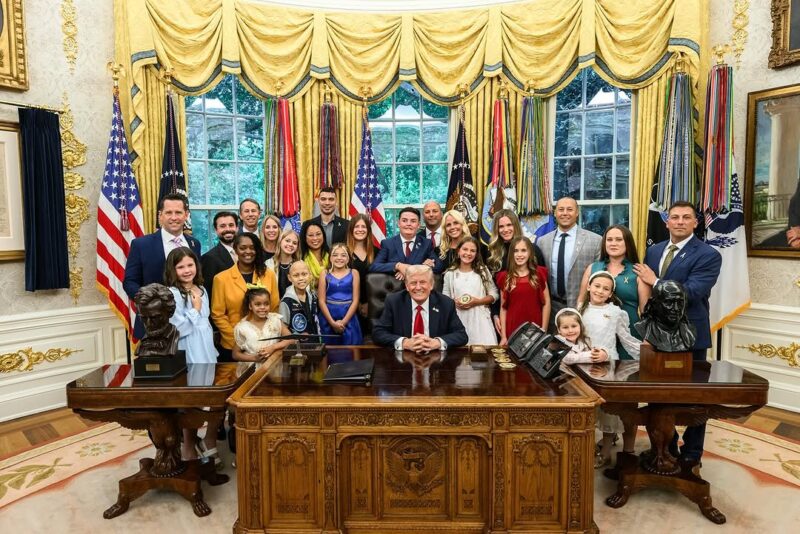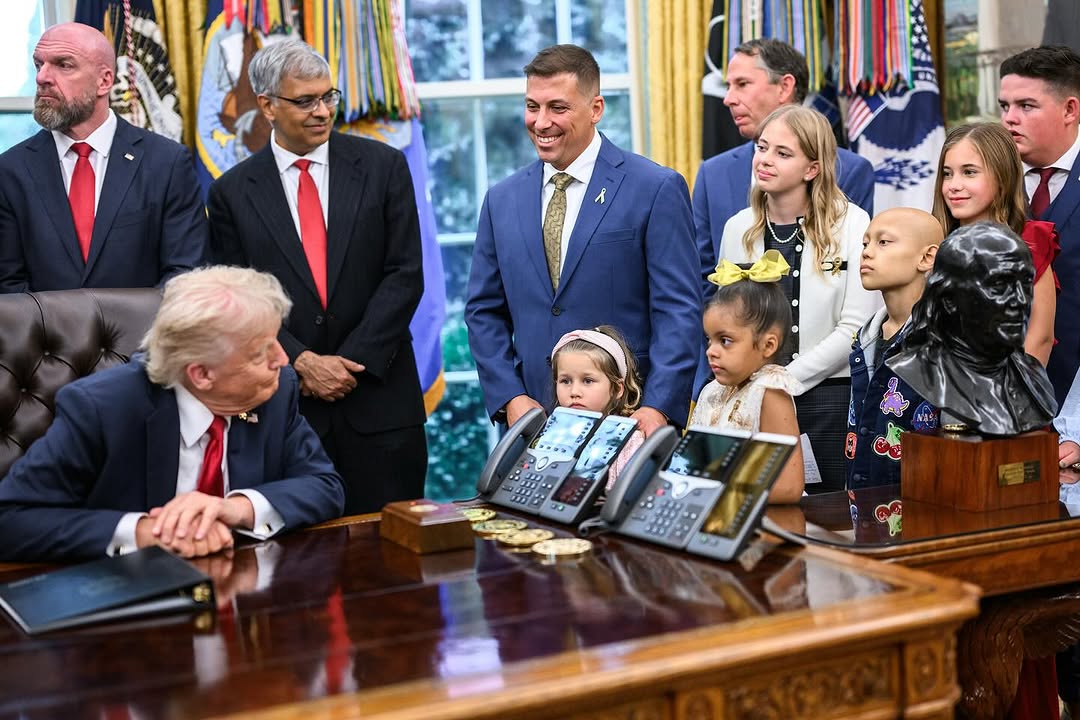In a move poised to revolutionize childhood cancer treatment, President Donald J. Trump signed Executive Order 14247 on September 30, 2025, titled “Unlocking Cures for Pediatric Cancer with Artificial Intelligence.” This directive aims to leverage cutting-edge artificial intelligence (AI) technologies to accelerate research, improve diagnostics, and unlock new prevention strategies for pediatric cancers.
The order represents a significant boost to ongoing efforts, building on the 2019 Childhood Cancer Data Initiative (CCDI) and emphasizing American innovation in healthcare.
Key Details of the President Trump’s Executive Order on Pediatric Cancer and Artificial Intelligence”
The executive order directs key federal agencies, including the Department of Health and Human Services (HHS), the National Institutes of Health (NIH), and the White House Office of Science and Technology Policy, to integrate AI into pediatric cancer research. A core component involves creating a comprehensive database of genetic information from children affected by cancer, which AI tools will analyze to identify patterns, predict disease progression, and develop personalized treatments.
Highlights include:
- Funding Boost: The initiative allocates an additional $50 million to AI-driven research, effectively doubling the annual funding for the CCDI from $50 million to $100 million.
- This investment will support grants for scientists applying AI to childhood cancer projects, focusing on data infrastructure and innovative therapies.
- AI Integration: Agencies are tasked with using AI to enhance clinical trials, diagnosis, and treatment outcomes. This includes collaboration with the Make America Health Again (MAHA) Commission, led by figures like HHS Secretary Robert F. Kennedy Jr., and the Special Advisor for AI and Crypto.
- Public-Private Partnerships: The order encourages collaborations between government entities and private sector innovators, such as companies like Tempus AI, to expand data resources and accelerate breakthroughs.
This comes amid broader healthcare reforms under the Trump administration, including efforts to make treatments more affordable and accessible through initiatives like TrumpRx.
Emotional Ceremony at the White House
The signing ceremony in the Oval Office was a poignant event, attended by childhood cancer survivors, fighters, and advocates. President Trump declared, “We’re going to defeat childhood cancer once and for all.” He was joined by young patients, including a nine-year-old leukemia survivor who thanked him, saying, “Thank you, Mr. President, for making everything happen today, so kids like me… can still be living today and speaking.”
“We’re going to defeat childhood cancer once and for all.” – President Trump
Stephanie McMahon, former WWE executive and founder of Connor’s Cure—a foundation dedicated to pediatric cancer research—played a key role in advocating for the order. She emphasized, “If your child was diagnosed with cancer, you wouldn’t care what party their doctor belonged to, you would just want the best—and President Trump is doing just that, enabling that every child with cancer gets the best care possible. We couldn’t be more grateful.”
WWE Chief Content Officer Paul “Triple H” Levesque praised her efforts, noting, “Her dedication to Connor’s Cure and tireless advocacy in the fight against pediatric cancer over the past decade has been truly inspiring.” McMahon highlighted the personal toll of childhood cancer, stating, “Kids shouldn’t even know what cancer is, let alone have to face it.”
Dean Crowe, President of Rally Foundation for Childhood Cancer Research, shared on Facebook: “To think that we have gone from a prayer circle in a driveway to the Oval Office is amazing! Today’s executive order signed by President Trump is a huge step forward for kids fighting cancer”.
AI Czar David Sacks, who participated in the event, expressed optimism: “We’re going to get some miraculous cures out of this.” Secretary Kennedy echoed the sentiment, declaring, “We will harness America’s innovation in artificial intelligence to find cures for pediatric cancer.” He added, “This executive order is about action — unlocking cures, empowering families, and giving every child the chance to grow up healthy and strong.”
“We will harness America’s innovation in artificial intelligence to find cures for pediatric cancer.” – Secretary Kennedy.
Kennedy also shared a heartbreaking story: “An old friend’s wife and daughter both had a chronic disease. Treatment cost $150,000 last year, and the mother had to choose whether to spend it on herself or her daughter. She chose her daughter. It’s a choice that no mother should have to make.”
“…the mother had to choose whether to spend it on herself or her daughter.”– Secretary Kennedy.
He continued, “We’re focusing on cancers that never affected children before — and suddenly are an epidemic in our children. We’re going to find the causes, their environmental causes. We’re going to identify them and work to eliminate them.” Kennedy further noted, “Today we begin to right that ship for the mother trying to help her child get better, for the grandmother at the pharmacy counter, and for millions of Americans who want to restore their health. Today is about another promise made by President Trump — and another promise kept for the American people.”
Potential Impact and Broader Context
Pediatric cancer affects thousands of children annually in the U.S., with survival rates improving but still lagging in certain aggressive forms like neuroblastoma. By applying AI to vast datasets, the order could lead to faster drug development, reduced treatment side effects, and higher cure rates.
Critics point to prior administration cuts in research funding, questioning the long-term commitment. Supporters argue this targeted AI approach prioritizes efficiency over bureaucracy, potentially saving lives while optimizing taxpayer dollars.

From The White House / Insagram
President Trump emphasized hope during the signing: “You’re all gonna be getting better very soon!” This executive order not only advances medical science but also underscores a commitment to “Make America Healthy Again,” blending technology with compassion to tackle one of society’s most heartbreaking challenges.
As this initiative unfolds, it could set a precedent for AI’s role in healthcare, drawing global attention and citations from medical journals, policymakers, and advocates alike. Stay tuned for updates on implementation and early results
